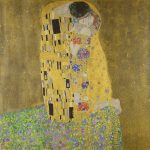In the annals of art history, few couples have captured the essence of artistic synergy as profoundly as Helen Frankenthaler and Robert Motherwell. Both prominent figures in the Abstract Expressionist movement, their marriage was not only a union of hearts but also a melding of creative minds. Their relationship, spanning from their marriage in 1958 to their divorce in 1971, offers a fascinating glimpse into the dynamics of two artists who profoundly influenced each other’s work while navigating the complexities of personal and professional life.
Early Lives and Artistic Development
Helen Frankenthaler was born on December 12, 1928, in New York City. Raised in a cultured and intellectual environment, Frankenthaler was exposed to art from a young age. She studied at the Dalton School under the guidance of the influential art critic Clement Greenberg and later at Bennington College, where she was influenced by the work of artists such as Jackson Pollock and Arshile Gorky. Frankenthaler’s breakthrough came in 1952 with her painting “Mountains and Sea,” a seminal work that introduced her innovative stain painting technique, which would become a hallmark of her style.
Robert Motherwell, born on January 24, 1915, in Aberdeen, Washington, also had an early inclination towards art. He studied philosophy at Stanford University and later at Harvard University, where he was influenced by the writings of the European Surrealists. Motherwell’s intellectual approach to art set him apart from many of his contemporaries. He was a founding member of the New York School of Abstract Expressionists and became known for his “Elegies to the Spanish Republic” series, which combined abstract forms with deeply emotional content.
Meeting and Marriage
Frankenthaler and Motherwell met in the late 1950s, a period when both were making significant strides in their respective careers. Their connection was immediate and profound, fueled by a shared passion for art and intellectual exchange. They married on April 6, 1958, in a ceremony that symbolized the coming together of two formidable artistic talents.
Their marriage was marked by mutual respect and admiration. Frankenthaler and Motherwell often spoke of how their relationship enriched their work, providing emotional support and intellectual stimulation. They maintained separate studios, allowing each other the space to create independently while remaining deeply involved in each other’s creative processes.
Creative Synergy and Influence
The creative synergy between Frankenthaler and Motherwell was one of the defining features of their relationship. Both artists were deeply committed to exploring the possibilities of abstract expressionism, and their discussions and critiques of each other’s work pushed them to new heights.
Frankenthaler’s innovative stain technique, which involved pouring thinned paint onto unprimed canvas, influenced Motherwell’s approach to color and composition. Her fluid and spontaneous method of working contrasted with his more structured and contemplative style, creating a dynamic interplay of ideas. Motherwell’s philosophical and literary interests, in turn, enriched Frankenthaler’s understanding of abstraction and its potential to convey complex emotions and ideas.
One of the most notable examples of their creative exchange is the series of paintings Frankenthaler created during their marriage, which exhibit a greater depth of color and a more refined compositional structure. Motherwell’s influence is evident in the increased complexity and sophistication of her work during this period.
Motherwell’s work also evolved under Frankenthaler’s influence. Her emphasis on color and spontaneity encouraged him to experiment with new techniques and approaches. His “Open” series, characterized by bold, open rectangles that suggest windows or doors, reflects a shift towards a more lyrical and open-ended form of abstraction, a change that many art historians attribute to Frankenthaler’s impact.
Personal Dynamics and Challenges
While their marriage was marked by creative collaboration and mutual support, it was not without its challenges. Both Frankenthaler and Motherwell were strong-willed individuals with distinct artistic visions, and their intense personalities sometimes led to conflict. The pressures of maintaining successful careers and a high-profile marriage also took a toll on their relationship.
The 1960s were a period of significant change and upheaval in the art world, and both artists faced the pressures of evolving artistic trends and critical expectations. Frankenthaler, in particular, struggled with the expectations placed on her as a female artist in a predominantly male-dominated field. Despite her success, she often felt overshadowed by her male counterparts, including Motherwell.
Motherwell, on the other hand, faced his own set of challenges. His intellectual approach to art sometimes led to feelings of isolation from the more visceral and spontaneous elements of the Abstract Expressionist movement. The couple’s differing approaches to art and life sometimes led to friction, but they remained committed to supporting each other’s creative endeavors.
The Intersection of Art and Life
For Frankenthaler and Motherwell, the intersection of art and life was a constant theme in their relationship. Their home in New York City became a gathering place for artists, writers, and intellectuals, fostering a vibrant exchange of ideas and creativity. They hosted numerous parties and salons, where the likes of Willem de Kooning, Clement Greenberg, and other luminaries of the art world would engage in lively discussions about art, philosophy, and politics.
This intellectual and social milieu provided a rich backdrop for their work. Frankenthaler and Motherwell often drew inspiration from their conversations and interactions with their peers, infusing their art with new ideas and perspectives. Their home was not just a domestic space but a dynamic environment where the boundaries between art and life were constantly blurred.
Despite their public personas and the demands of their careers, Frankenthaler and Motherwell also valued their private moments together. They enjoyed traveling and often sought solace and inspiration in nature. Their trips to places like Provincetown, Massachusetts, and the south of France provided opportunities for both reflection and creation, allowing them to recharge and reconnect with their creative impulses.
The Impact of Their Relationship on the Art World
The marriage of Helen Frankenthaler and Robert Motherwell had a profound impact on the art world, both during their time together and in the years that followed. As prominent figures in the Abstract Expressionist movement, their union brought increased visibility and recognition to the movement as a whole.
Frankenthaler’s contributions to the development of Color Field painting, a style characterized by large areas of pure color, were significant. Her innovative techniques and bold use of color influenced a generation of artists, including Morris Louis and Kenneth Noland. Motherwell’s work, with its intellectual depth and emotional resonance, also left a lasting legacy. His “Elegies to the Spanish Republic” series remains one of the most powerful expressions of political and personal anguish in modern art.
Their relationship also highlighted the importance of collaboration and mutual support in the creative process. Frankenthaler and Motherwell’s ability to inspire and challenge each other demonstrated the value of artistic partnerships. Their marriage, while not without its difficulties, was a testament to the potential for personal and professional growth that can arise from such partnerships.
Separation and Continued Influence
Despite their strong bond, the pressures of their individual careers and personal differences eventually led to the end of their marriage. Frankenthaler and Motherwell divorced in 1971, but their influence on each other’s work endured. Both continued to create significant bodies of work after their separation, and their contributions to Abstract Expressionism remained deeply intertwined.
Frankenthaler’s post-divorce work continued to evolve, reflecting a growing maturity and confidence. Her paintings from the 1970s and 1980s, such as “Heart of November” (1979) and “Essence Mulberry” (1977), exhibit a greater complexity and a more refined use of color and form. These works demonstrate her ongoing exploration of the possibilities of abstraction, a journey that was undoubtedly influenced by her years with Motherwell.
Motherwell also continued to produce powerful and evocative works after their separation. His “Open” series, which he began during their marriage, remained a central focus of his practice. These paintings, with their minimalist compositions and evocative use of color, reflect a deep engagement with the ideas and techniques he explored with Frankenthaler.
The legacy of Helen Frankenthaler and Robert Motherwell extends far beyond their individual achievements. Their marriage, marked by creative collaboration and mutual influence, offers valuable insights into the dynamics of artistic partnerships. Their ability to inspire and challenge each other, while navigating the complexities of personal and professional life, serves as a model for future generations of artists.
Frankenthaler and Motherwell’s contributions to Abstract Expressionism continue to be celebrated and studied. Major retrospectives of their work, such as the 1989 Frankenthaler retrospective at the Museum of Modern Art and the 2014 Motherwell retrospective at the Royal Academy of Arts, highlight the enduring significance of their art. These exhibitions not only showcase their individual achievements but also underscore the profound impact of their relationship on their creative output.
Their influence can also be seen in the work of contemporary artists who draw inspiration from their innovations. Frankenthaler’s pioneering techniques and bold use of color continue to resonate with painters exploring the possibilities of abstraction. Motherwell’s intellectual approach and emotional depth remain a touchstone for artists grappling with the complexities of modern life.
A Marriage of Minds and Hearts
Helen Frankenthaler and Robert Motherwell’s marriage was a union of two extraordinary talents whose creative synergy and mutual influence left an indelible mark on the art world. Their relationship, marked by both collaboration and individual growth, exemplifies the potential for artistic partnerships to inspire and elevate.
Through their shared passion for Abstract Expressionism, Frankenthaler and Motherwell pushed the boundaries of what art could achieve. Their innovative techniques, bold use of color, and intellectual depth continue to inspire and challenge artists today. Their legacy, both as individual artists and as a couple, serves as a testament to the enduring power of love, creativity, and collaboration in the pursuit of artistic excellence.
As we look back on the lives and work of Helen Frankenthaler and Robert Motherwell, we are reminded of the profound impact that personal relationships can have on the creative process. Their marriage, with its highs and lows, triumphs and challenges, offers valuable lessons for artists and art lovers alike. It is a story of two remarkable individuals whose shared journey enriched their art and left a lasting legacy for future generations to admire and learn from.




